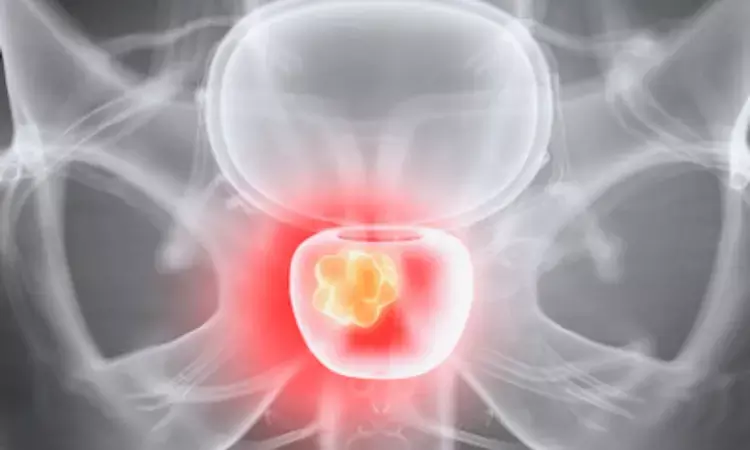- Home
- Medical news & Guidelines
- Anesthesiology
- Cardiology and CTVS
- Critical Care
- Dentistry
- Dermatology
- Diabetes and Endocrinology
- ENT
- Gastroenterology
- Medicine
- Nephrology
- Neurology
- Obstretics-Gynaecology
- Oncology
- Ophthalmology
- Orthopaedics
- Pediatrics-Neonatology
- Psychiatry
- Pulmonology
- Radiology
- Surgery
- Urology
- Laboratory Medicine
- Diet
- Nursing
- Paramedical
- Physiotherapy
- Health news
- Fact Check
- Bone Health Fact Check
- Brain Health Fact Check
- Cancer Related Fact Check
- Child Care Fact Check
- Dental and oral health fact check
- Diabetes and metabolic health fact check
- Diet and Nutrition Fact Check
- Eye and ENT Care Fact Check
- Fitness fact check
- Gut health fact check
- Heart health fact check
- Kidney health fact check
- Medical education fact check
- Men's health fact check
- Respiratory fact check
- Skin and hair care fact check
- Vaccine and Immunization fact check
- Women's health fact check
- AYUSH
- State News
- Andaman and Nicobar Islands
- Andhra Pradesh
- Arunachal Pradesh
- Assam
- Bihar
- Chandigarh
- Chattisgarh
- Dadra and Nagar Haveli
- Daman and Diu
- Delhi
- Goa
- Gujarat
- Haryana
- Himachal Pradesh
- Jammu & Kashmir
- Jharkhand
- Karnataka
- Kerala
- Ladakh
- Lakshadweep
- Madhya Pradesh
- Maharashtra
- Manipur
- Meghalaya
- Mizoram
- Nagaland
- Odisha
- Puducherry
- Punjab
- Rajasthan
- Sikkim
- Tamil Nadu
- Telangana
- Tripura
- Uttar Pradesh
- Uttrakhand
- West Bengal
- Medical Education
- Industry
Radiomics features from multiparametric MRI exams can predict prostate cancer metastases: Study

USA: A recent study revealed that radiomics features extracted from multiparametric MRI exams can help to predict prostate cancer metastatic risk. The study findings, presented at the International Society for Magnetic Resonance in Medicine (ISMRM) meeting held in London, U.K. imply how prostate cancer circulating tumor cells negatively affect patient outcomes.
"Circulating tumor cells are cancer cells detectable in the peripheral blood released by the tumor," , presenter Mohammad Alhusseini, PhD, of the University of Miami Miller School of Medicine in Florida said. "[They] constitute seeds for subsequent growth of additional tumor metastases, triggering a mechanism that is responsible for many cancer-related deaths."
The team explained that the number of circulating tumor cells (CTCs) is an indicator of metastatic risk in prostate cancer and is a meaningful biomarker. "Quantitative multiparametric MRI features in prostate cancer are associated with tumor aggressiveness," Alhusseini said.
The researchers aimed to explore any links between radiomic features from multiparametric MRI of the prostate and circulating tumor cell counts in 73 prostate cancer patients. They developed and trained a neural network algorithm to predict circulating tumor cell counts (with a threshold of five or more CTCs indicating risk of metastatic disease). 100 training and testing runs of five-fold cross-validation were conducted by the team, measuring results using the area under the receiver operating curve (AUC).
The following radiomics features were used to train the algorithm:
- T-onset -- time of onset of the contrast wash-in
- T2 intensity, 50%
- Higher tumor volume, measured by a tool the group developed for the algorithm called the Habitat Risk Score 6 (HRS6), which is based on a one to 10 scale.
- Apparent diffusion coefficient (ADC) intensity skewness
- ADC contrast mean
- ADC contrast kurtosis
- B-value intensity
Blood collection was done from study participants enrolled in two trials: one an "active surveillance" trial and another a randomized radiotherapy trial that investigated the effects of an MRI-guided prostate radiotherapy treatment. The patients underwent multiparametric MRI (including axial T2-weighted MRI, diffusion-weighted imaging [DWI] and dynamic contrast-enhanced [DCE]-MRI exams) and MRI-ultrasound fusion biopsy. Blood draws was used to assess the amount of circulating tumor cells.
The findings of the study were as follows:
- In the active surveillance trial arm, the mean circulating tumor count per 7.5 mL of blood was 19. In the radiotherapy trial arm, the median circulating tumor count in 7.5 mL of blood was 74.
- Using the seven features, the team found an average AUC of 0.769 for a connection with higher CTC counts and adverse effects; of the seven, HRS6, lower T2 intensity measurements, and time of onset were the top three, with an AUC of 0.834.
The group conclude, "this is the first study to the best of our knowledge to model CTC counts with in vivo multiparametric MRI radiomics. Magnetic resonance imaging radiomics features are promising markers of prostate cancer metastatic risk."
Dr Kamal Kant Kohli-MBBS, DTCD- a chest specialist with more than 30 years of practice and a flair for writing clinical articles, Dr Kamal Kant Kohli joined Medical Dialogues as a Chief Editor of Medical News. Besides writing articles, as an editor, he proofreads and verifies all the medical content published on Medical Dialogues including those coming from journals, studies,medical conferences,guidelines etc. Email: drkohli@medicaldialogues.in. Contact no. 011-43720751


